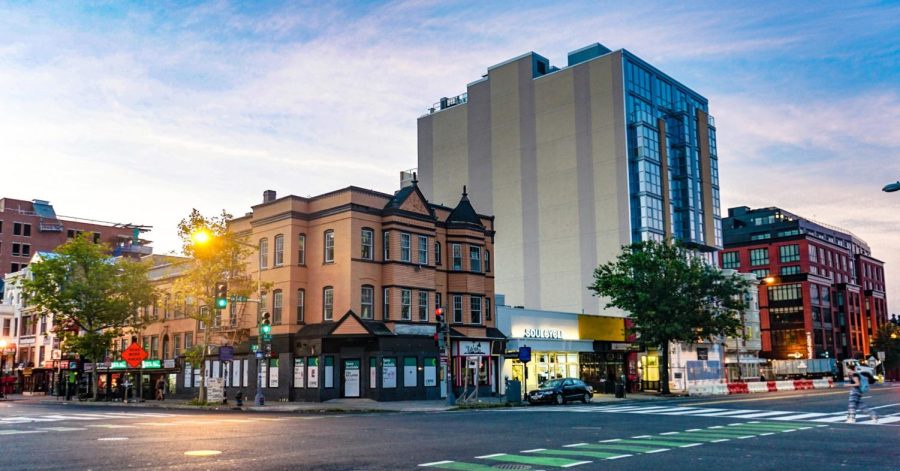Gentrifying California: One City at a Time
May 5, 2022
On the eve of March. 31, 2022, the California State Assembly passed AB 2179, extending the eviction moratorium for the fourth consecutive cycle until June. 30, 2022.
Alongside AB 1482 — which was passed in 2019 as a rent control measure for nearly 40 million statewide renters — California legislators are desperately striving to remedy the ongoing housing crisis, made acute as pandemic conditions elapse and rent hikes surge.
Sixty-eight percent of rental units are controlled in neighboring San Francisco, with the City Council subsidizing 13%, according to the 2002 San Francisco Tenant Survey Summary Report. As the State leverages rent control instruments, rent burden becomes more manageable, with 38% of respondents reporting high rent burdens than 56% of respondents with high rent burdens in market-rate housing units.
As land and properties rife for gentrification are exhausted, the process continues into nearby areas.“Rent control is temporary relief,” claimed Dr. Kalemba Kizito, visiting Assistant Professor of Communications at Boston College.
Kizito —as a previous resident of the Bay Area for over 17 years — witnessed the displacement of minority communities first-hand in the wake of the Tech Industry boom, inspiring him towards the study of diffusion and demarcation of culture within society borne of racial and socioeconomic characteristics.
“Borders enforce a special [mode] of politics and law enforcement, reinforce the idea of exile,” Kizito explained, stating that today, “borders [aren’t set] by old cartographers, but by business interests, with Capital as the cartographer.”
Despite rent caps and legislative inhibitors, housing prices are projected to rise in the Bay Area due to gentrification efforts.
San Francisco and Oakland boasted the highest rates of gentrification in the nation, affecting one-third of poor neighborhoods in the area, Mercury News reported. Kizito posits that the process of gentrification poaches living spaces, subsequently raising the prices not only for adjacent properties but also for goods and services.
In his view, “Gentrification as an extension of old colonial logics, fueled by modern-day economics,” as capital interests and the astronomical surge of the tech industry in the Bay Area exacerbated the issue.
Kizito argued that the displacement of native communities erodes tangible “memory,” or the community’s collective history. “Wealth is attached to land; once you uproot people, places cease to exist,” Kizito said. “For each skyscraper that goes up, that’s a memory lost forever.”
However, gentrification may also be interpreted as an investment into a community or an inevitable future of any burgeoning city.
“All cities survive through gentrification,” claimed Dr. Sherman Lewis, Professor Emeritus at California State University, East Bay, “if there is no economic reason for [a city] to exist, the city dies.”
To Lewis, the tragedy of Bay Area gentrification is a testament to its overwhelming economic prosperity. The surplus of employment opportunities and tremendous economic activity have primed the Bay Area towards a housing crisis, as “jobs do not have to be responsible for employee housing, imposing the burden onto the employees and the cities,” Lewis corroborated. Gentrification, as presented by Lewis, is not an ongoing issue; instead, the accelerated rate of gentrification is the core problem.
“As housing values increase, older generations sell at a profit,” emphasized Lewis, noting that such trends in housing market prices undermine social stability and are especially detrimental to the “heart and soul of the neighborhood,” aka working low- and middle-income households. The Bay Area Equity Atlas reports that 31% of low-income households live in gentrifying neighborhoods, and 9% live in neighborhoods at risk of gentrifying, rendering this issue of public policy especially poignant.
Lewis noted that the speed of gentrification is unlikely to wane at the current rate of job creation. Instead of advocating for job reduction, helping low- and middle-income families towards homeownership through rent-to-buy and tax programs should yield adequate protection against waves of gentrification. “Help people who can’t afford a house buy one, [by using] superior voting power to stop job externalities,” Lewis exclaimed.
Kizito, on the other hand, believes in empowering locals into government and instituting nationwide rent caps and rent control measures.

















